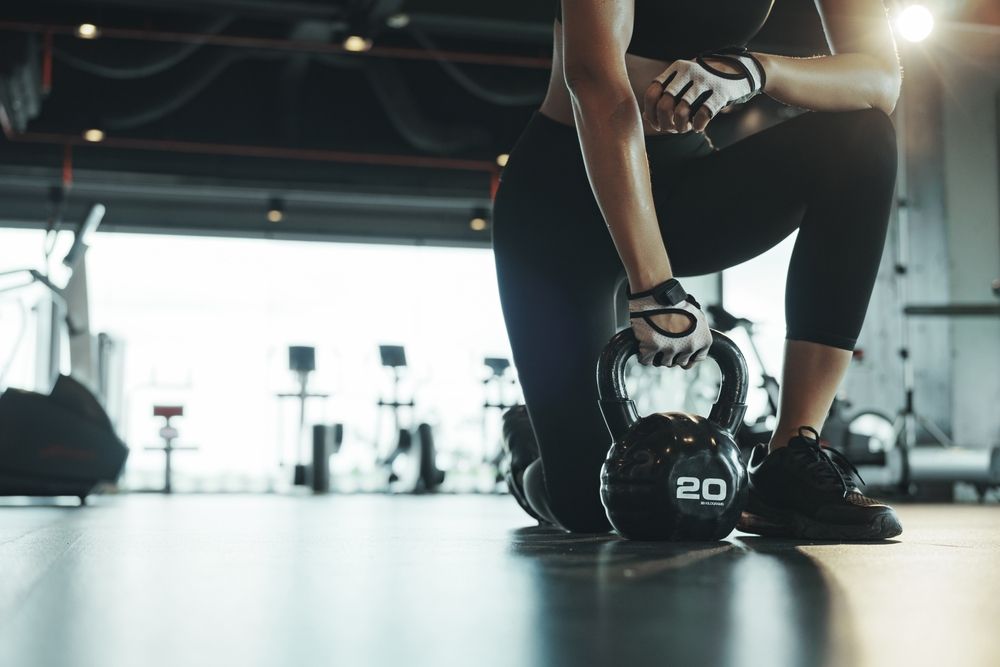
With over a decade of experience as a certified strength and conditioning specialist and sports nutrition coach, I’ve had the privilege of guiding countless clients toward transformative fitness journeys. Among the most common goals is reducing belly fat—a challenge that calls for a science-driven combination of effective training methods and sustainable lifestyle changes. Over the years, I’ve honed my approach to deliver maximum results in minimal time, leveraging principles rooted in cutting-edge exercise science.
One of my go-to routines for clients seeking fat loss while building strength and endurance is a full-body circuit combined with a core finisher. This workout is a powerhouse of efficiency and versatility, offering challenges for experienced gym-goers and easy modifications for beginners. By blending strength exercises, high-intensity cardio, and core-focused moves, it creates a winning formula for burning fat, sculpting lean muscle, and enhancing overall fitness. Time and again, my clients have achieved remarkable results with this method—and I’m confident you can, too!
Why This Workout Targets Belly Fat
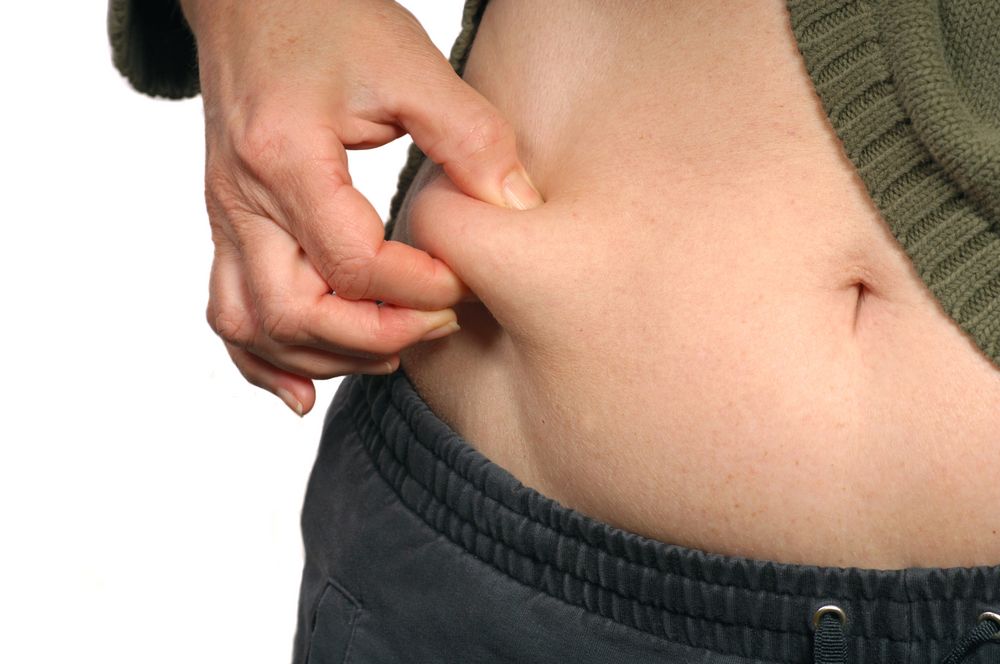
This workout tackles belly fat with a dynamic combination of strength training and high-intensity cardio for maximum fat-burning potential. Strength moves like kettlebell swings and dumbbell push presses engage multiple muscle groups, ramping up calorie burn and promoting the development of lean muscle. Building muscle is key to raising your resting metabolic rate, enabling your body to burn more calories even at rest.
Adding a moderate sprint on a cardio machine supercharges fat loss by elevating your heart rate and improving cardiovascular efficiency. High-intensity intervals force your body to tap into stored glycogen for energy, setting the stage for increased fat oxidation during recovery. To target the core, exercises like med ball slams and dumbbell chops strengthen and activate the abdominal muscles, enhancing posture and stability. As body fat decreases, these focused movements help reveal a leaner, more sculpted midsection.
Top Tips for Maximizing Belly Fat Loss With This Routine
1. Prioritize Proper Form
Mastering correct form is essential for activating the right muscle groups and avoiding injuries. Take the time to perfect each movement before increasing intensity or weights. For example, a proper kettlebell swing hinges on a powerful hip drive, not arm strength.
2. Incorporate Progression
Gradually increase weights, repetitions, or rounds to keep challenging your body. Progressive overload is key for building muscle and promoting fat loss over time.
3. Consistency Is Key
Stick with this routine 2–3 times per week, complementing it with other workouts and active recovery days. Consistent effort over weeks and months delivers the best results for fat loss and muscle definition.
4. Support Your Efforts With Nutrition
A well-rounded diet is vital for maximizing workout results. Focus on whole, nutrient-dense foods like lean proteins, vegetables, and healthy fats. Pair your meals with a calorie deficit to accelerate fat loss.
5. Prioritize Recovery
Recovery is where the magic happens. Allow your muscles to repair and grow by prioritizing rest days and incorporating light activities like stretching or yoga. Proper recovery reduces soreness and keeps you consistent.
Full-Body Circuit + Core Finisher
What You Need:
For this 40–50 minute workout, gather a kettlebell, dumbbells, a slam ball, and access to a cardio machine (e.g., an Assault Bike or rower).
The Routine
Full-Body Circuit (3–5 Rounds)
- Kettlebell Swings – 10 reps
- Dumbbell Push Press – 10 reps
- Dumbbell Forward Lunge – 10 reps per leg
- Kettlebell Gorilla Row – 10 reps per arm
- Cardio Machine Moderate Sprint – 1:00
Directions:
Perform each exercise in sequence for the prescribed reps. Rest only as needed between exercises. After completing all exercises in one round, rest for 5 minutes before starting the next round.
Core Workout (3 Rounds)
- Slam Ball Front Slams (No Bounce) – 30 seconds
- Dumbbell Low-to-High Chops – 15 reps per side
Directions:
Perform the core exercises back-to-back with minimal rest. Take a 1-minute break between rounds.
This routine is designed to torch fat, build lean muscle, and improve your overall fitness. Stick with it, and you’ll be on your way to a stronger, leaner you!
How to Do It:
Full-Body Circuit
Kettlebell Swings
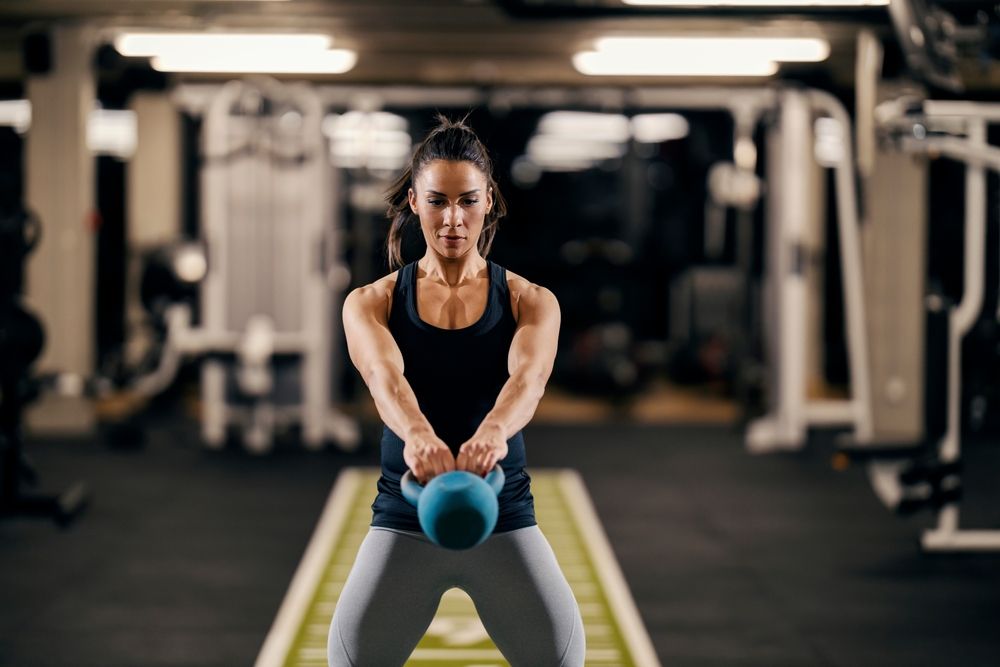
- Place a kettlebell on the floor.
- Stand with your feet slightly wider than shoulder-width apart. Your toes should point slightly outward.
- Hinge at your hips and grab the kettlebell with both hands.
- Keep your back flat, shoulders pulled back, and core engaged.
- Pull the kettlebell back between your legs, maintaining a deep hip hinge. Avoid rounding your back.
- Snap your hips forward, using the momentum generated by your glutes and hamstrings to swing the kettlebell to chest height. The arms should remain straight and relaxed; don't use them to lift the kettlebell.
- Allow the kettlebell to swing back down naturally, guiding it between your legs as you hinge again. Repeat for the prescribed reps.
Dumbbell Push Press
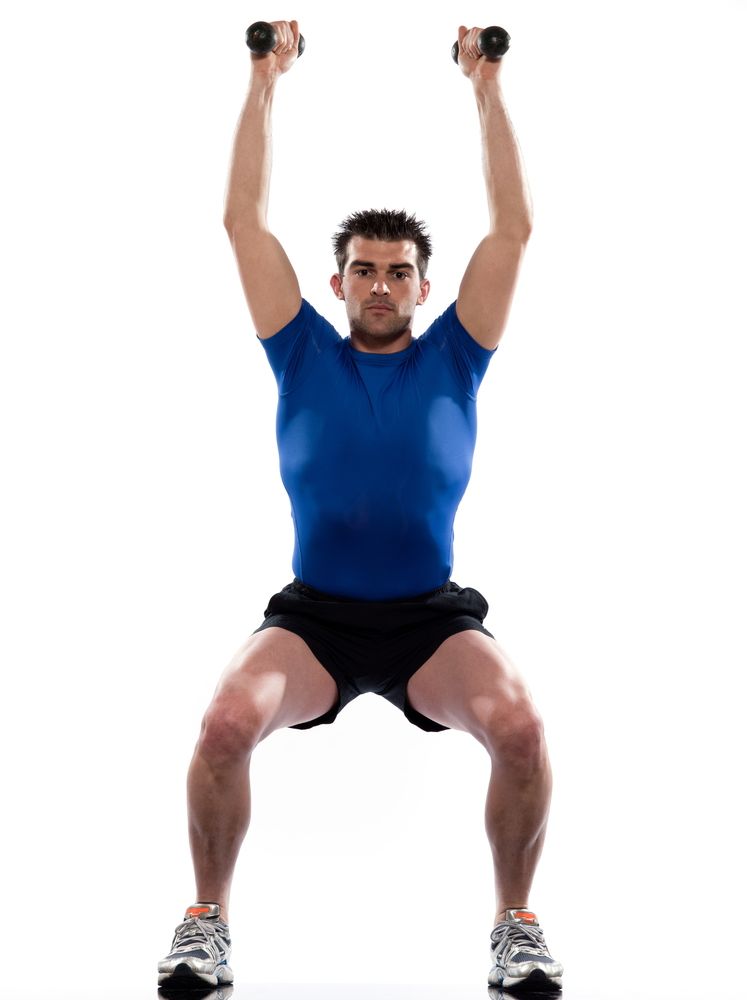
- Hold a dumbbell in each hand at shoulder height, palms facing forward. Your feet should be shoulder-width apart.
- Bend your knees slightly into a shallow squat, keeping your chest upright and core tight.
- Drive through your heels, extending your legs as you press the dumbbells overhead in a controlled motion.
- Slowly bring the dumbbells back down to shoulder height. Pause briefly before repeating.
- Avoid leaning back or flaring your ribs as you press. Keep your core engaged to protect your lower back.
Dumbbell Forward Lunge
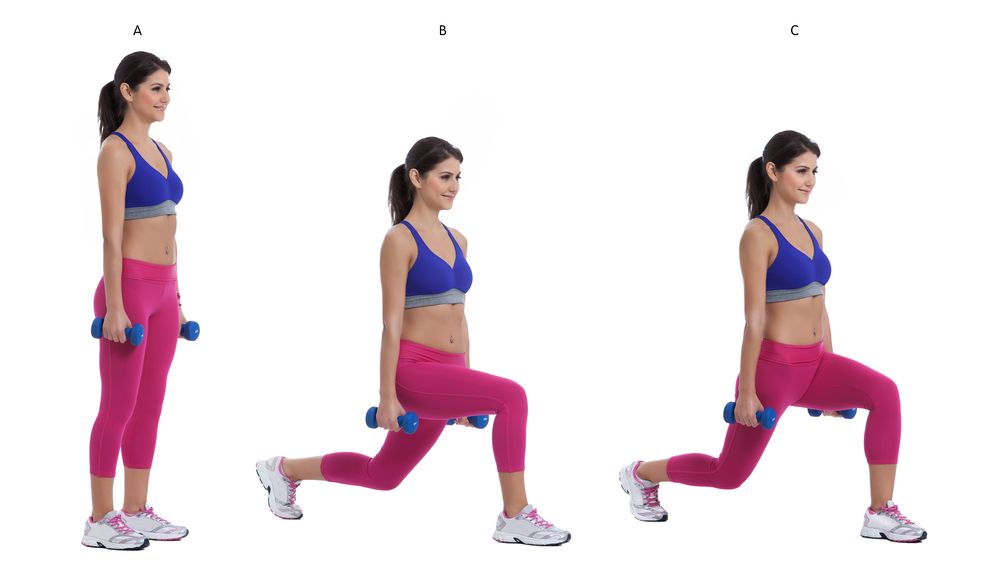
- Hold a dumbbell in each hand at your sides.
- Stand tall with your feet together.
- Take a big step forward with your right leg, ensuring your front knee stays aligned over your toes. Your back heel should lift off the ground.
- Drop your back knee toward the floor, creating two 90-degree angles at your knees. Avoid letting your front knee go beyond your toes.
- Drive through your front heel to return to the starting position.
- Repeat on the left leg, alternating for the prescribed reps.
- Keep your torso upright throughout the movement. Avoid leaning forward.
Kettlebell Gorilla Row
- Place two kettlebells on the floor between your feet, shoulder-width apart.
- Hinge at your hips and grab the kettlebell handles with a neutral grip.
- Pull one kettlebell toward your ribcage, keeping your elbow close to your body and squeezing your shoulder blade at the top.
- Lower the kettlebell to the floor and repeat on the other side—alternate rows for the prescribed reps per arm.
- Keep your core tight and back flat. Avoid twisting your torso as you row.
Cardio Machine Moderate Sprint
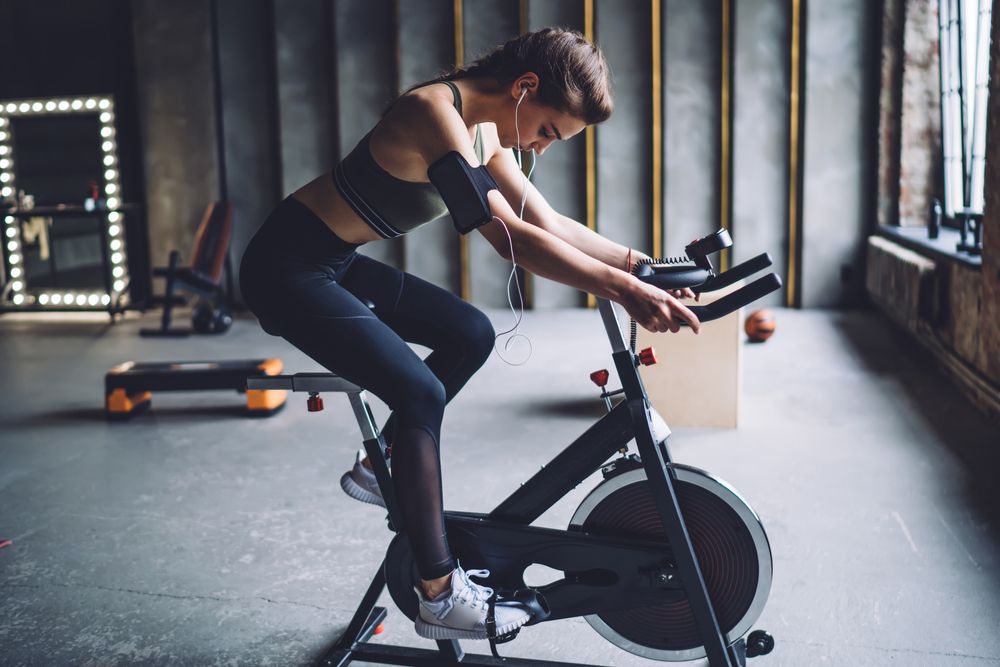
- Adjust the machine (Assault Bike, rower, or similar) to your preferred settings.
- Begin pedaling, rowing, or moving at a moderate-to-high intensity that you can sustain for 1 minute.
- Maintain smooth, consistent movement. Aim to challenge your pace without compromising form.
Core Workout
Slam Ball Front Slams (No Bounce)
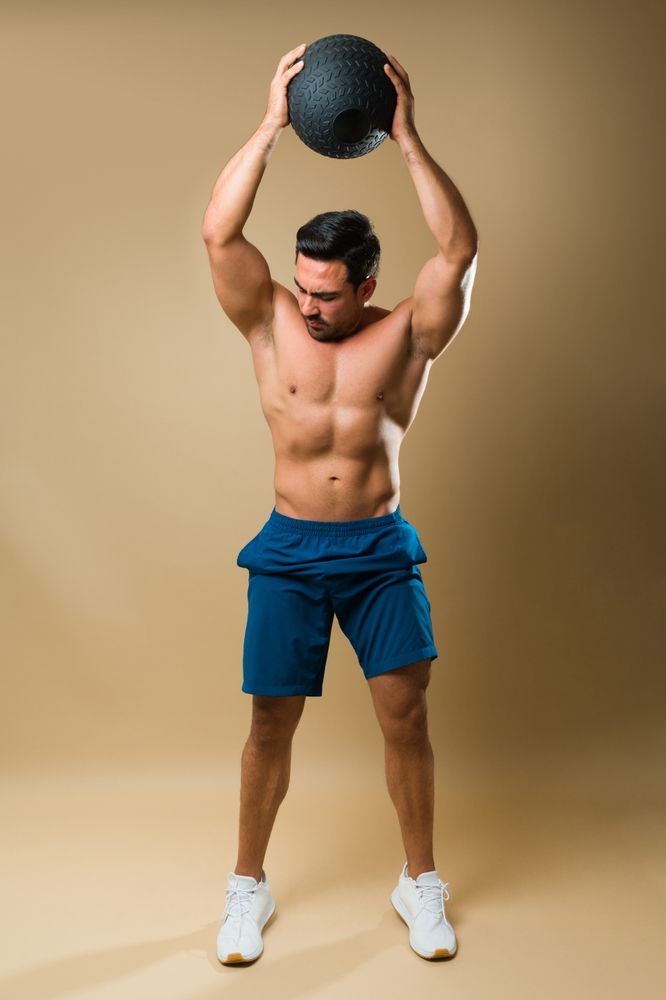
- Stand with feet shoulder-width apart, holding a slam ball with both hands.
- Raise it overhead with your arms extended.
- Engage your core and explosively drive the ball downward, aiming to slam it as hard as possible into the floor.
- Quickly pick up the ball and repeat.
- Keep your back straight as you slam and retrieve the ball. Engage your abs to maximize power.
Dumbbell Low-to-High Chops
- Hold one dumbbell with both hands, starting at hip height on one side of your body.
- Your feet should be slightly wider than shoulder-width apart and your knees slightly bent.
- Rotate your torso as you lift the dumbbell diagonally across your body to the opposite shoulder.
- Pivot your back foot to allow your hips to follow the movement.
- Reverse the motion, bringing the dumbbell back to the starting position at your hip.
- After completing reps on one side, switch to the other side.
- Engage your core throughout the motion. Avoid using your arms to move the weight—focus on rotational power from your torso.

